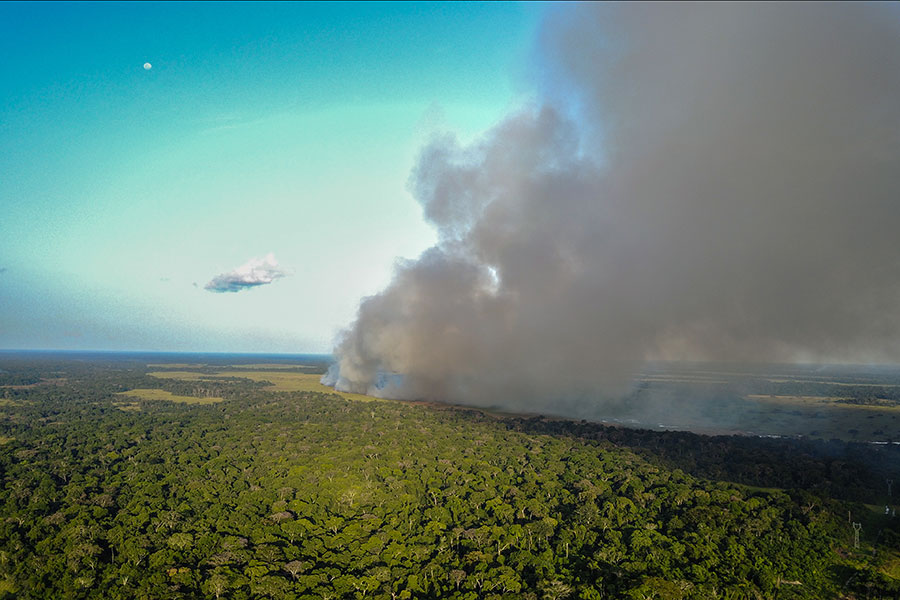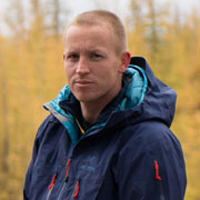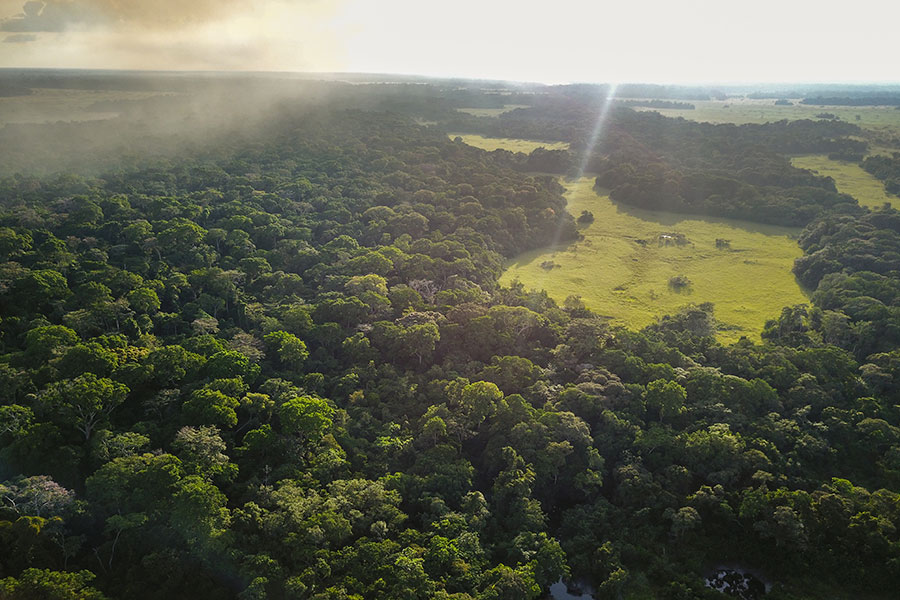
The remote forests of Africa’s Congo Basin have long been a blind spot for scientists working to understand how Earth’s natural cycles respond to the environmentally unique characteristics of different regions.

Now, two Florida State University researchers are part of a global team of scientists revealing the unexpected role that large-scale fires and high nitrogen deposition play in the ecology and biogeochemistry of these lush Central African forests.
Their findings, published in the journal Proceedings of the National Academy of Sciences, could signal a fundamentally new understanding of these forests’ structure, functioning and biodiversity.
“We have been working in the Congo Basin for a decade and discoveries like this provide novel insights into how our planet works and remind us how much we still have to understand about the world around us,” said Rob Spencer, associate professor in the Department of Earth, Ocean and Atmospheric Science.
In collaboration with their Belgian and Congolese colleagues, FSU scientists conducted extensive field research throughout the densely forested Congo Basin — a region whose inaccessibility and political turmoil has rendered it critically understudied and data poor.
Samples collected during the fieldwork were processed using an ultrahigh-resolution mass spectrometer housed at the FSU-headquartered National High Magnetic Field Laboratory. This sophisticated analytical tool provides detailed molecular signatures of the organic material in a given sample.
Researchers were particularly interested in sifting through the samples for a group of fire-derived compounds called condensed aromatics, which indicate the role of fire as a source of organic material.

“Sure enough, we found that the fire-derived condensed aromatics were connected to the high levels of nitrogen in the samples,” said FSU doctoral candidate Travis Drake, a co-author of the study. “The atmospheric modeling already suggested that these elevated depositions of nitrogen were linked to fire, but now we had some molecular evidence to back it up.”
The forests of the Congo Basin are bordered on their northern and southern sides by vast mosaics of dry savannas and grasslands. When fires ignite in these drier regions as a result of slash-and-burn agriculture or natural causes like lightning, massive tracts of biomass go up in smoke. Much of the organic nitrogen from those fires, researchers have now found, is swept up into the atmosphere and deposited on the forests.
In tropical ecosystems like the Congolese forests, nitrogen can often act as a limiting nutrient — a naturally occurring element whose scarcity may curb biological growth. When surpluses of a limiting nutrient are pumped into an ecosystem, it can stimulate and accelerate growth in a selection of enterprising species.
On its face, this process may seem harmless. But, Drake said, nutrient saturation can actually have the effect of curtailing biodiversity.
“Each organism in an ecosystem specializes and tries to find its small place in the cascade of nutrients,” Drake said. “But if the forest is being flooded with nutrients, certain plants and organisms will benefit much more than others, and that can lead to less biodiversity.”
Drake said these findings raise a major question about the ecology of the Congo forests: If these high rates of nitrogen deposition have been going on for hundreds, thousands or tens of thousands of years, how might that have affected the forests’ long-term growth and development?
“There are some amazing ecological differences between the Congo forest and other rainforests like the Amazon,” he said. “The Amazon doesn’t have the expansive, arid savannas or the significant fire inputs that are found in the Congo, and there is far less biodiversity in the Congo than in the Amazon. If fires have been plowing the atmosphere with nitrogen for years, it’s possible the Congo may just be an extremely over-fertilized forest.”

In the past, little research had been conducted on the ecology and biogeochemistry of the Congo forests. In fact, in many cases, models of the region relied on decades-old data, speculation or rates crudely grafted from other rainforests around the world.
Now, scientists are working with a renewed appreciation of Central Africa’s unique ecological characteristics. Drake said these most recent findings help to signal a new age of research in the forests of the Congo Basin.
“People are now seeing the Congo as an important hotbed for research,” he said. “It’s an encouraging time to be a scientist working in the Congo.”
National High Magnetic Field Laboratory researchers Phoebe Zito and David Podgorski also contributed to this research, as well as Marijn Bauters, Hans Verbeeck, Samuel Bodé, Pedro Hervé-Fernández and Pascal Boeckx from Ghent University; Faustin Boyemba and Isaac Makelele from the Université de Kisangani; and Landry Cizungu Ntaboba from the Université Catholique de Bukavu. The research was supported by the Belgian Development Cooperation, the National Science Foundation and the Winchester Foundation.




